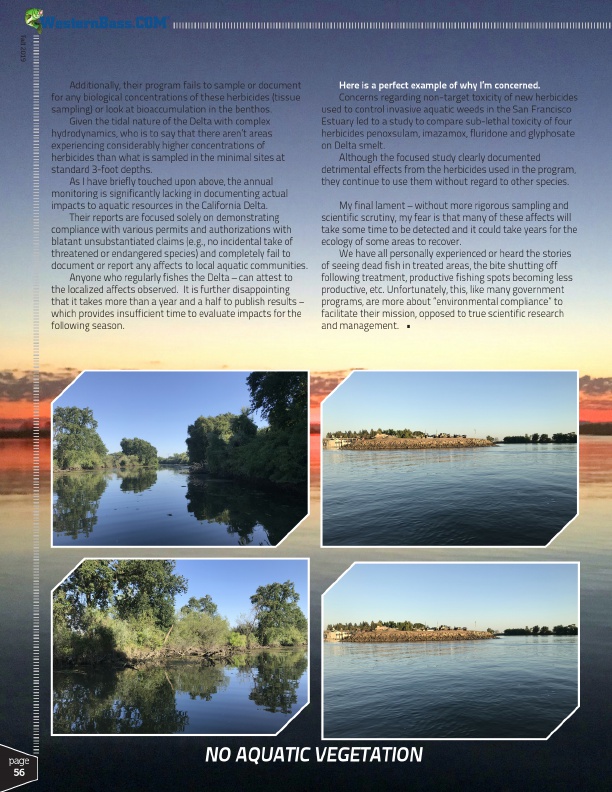
Fall 2019
®
Additionally, their program fails to sample or document for any biological concentrations of these herbicides (tissue sampling) or look at bioaccumulation in the benthos.
Given the tidal nature of the Delta with complex hydrodynamics, who is to say that there aren’t areas experiencing considerably higher concentrations of herbicides than what is sampled in the minimal sites at standard 3-foot depths.
As I have briefly touched upon above, the annual monitoring is significantly lacking in documenting actual impacts to aquatic resources in the California Delta.
Their reports are focused solely on demonstrating compliance with various permits and authorizations with blatant unsubstantiated claims (e.g., no incidental take of threatened or endangered species) and completely fail to document or report any affects to local aquatic communities.
Anyone who regularly fishes the Delta – can attest to the localized affects observed. It is further disappointing that it takes more than a year and a half to publish results – which provides insufficient time to evaluate impacts for the following season.
Here is a perfect example of why I’m concerned.
Concerns regarding non-target toxicity of new herbicides used to control invasive aquatic weeds in the San Francisco Estuary led to a study to compare sub-lethal toxicity of four herbicides penoxsulam, imazamox, fluridone and glyphosate on Delta smelt.
Although the focused study clearly documented detrimental effects from the herbicides used in the program, they continue to use them without regard to other species.
My final lament – without more rigorous sampling and scientific scrutiny, my fear is that many of these affects will take some time to be detected and it could take years for the ecology of some areas to recover.
We have all personally experienced or heard the stories of seeing dead fish in treated areas, the bite shutting off following treatment, productive fishing spots becoming less productive, etc. Unfortunately, this, like many government programs, are more about “environmental compliance” to facilitate their mission, opposed to true scientific research and management. •
page NO AQUATIC VEGETATION
56